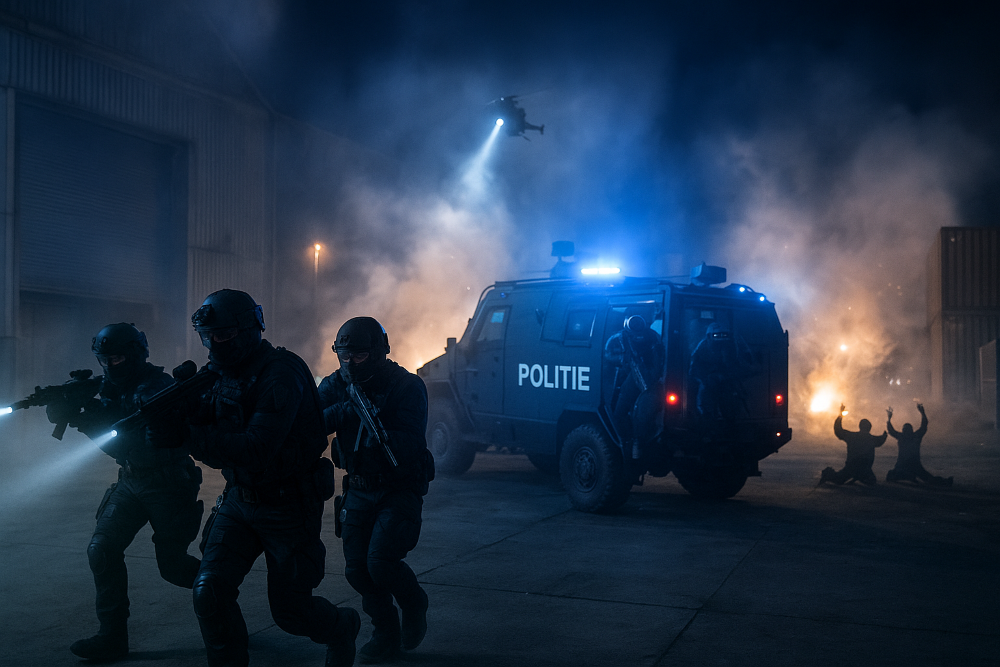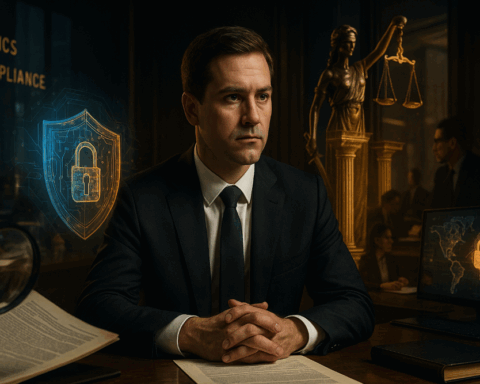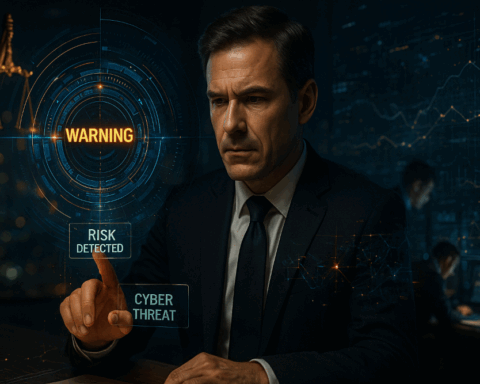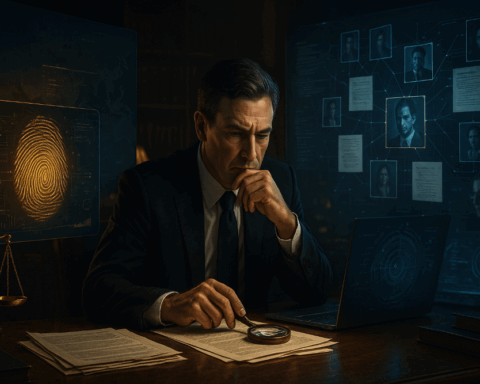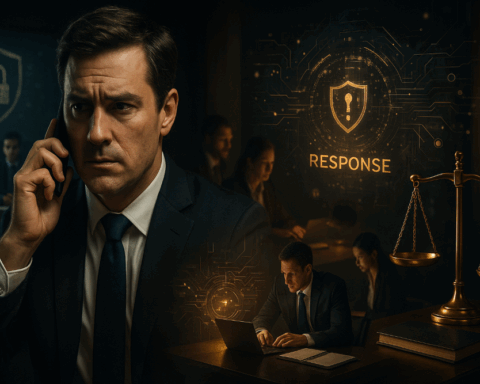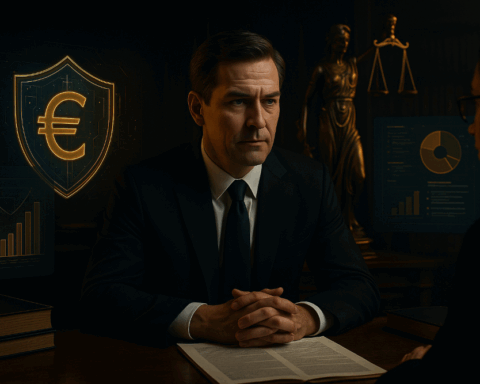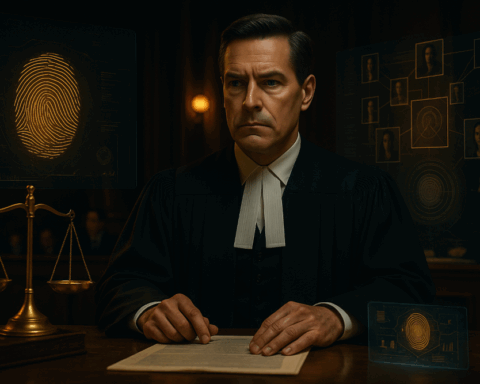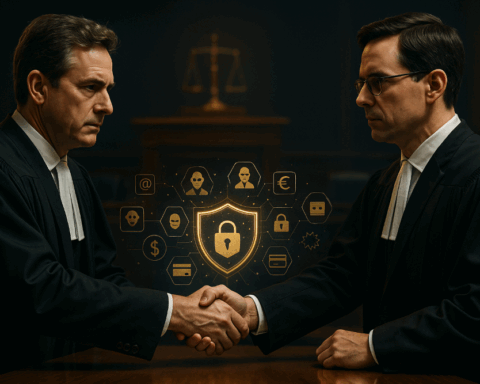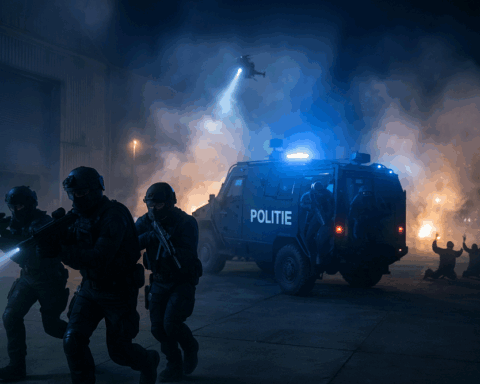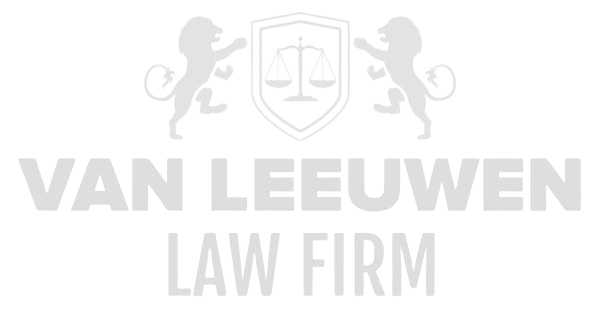Camera surveillance has become an instrument of unprecedented significance in contemporary public order enforcement. It enables the mayor to act proactively against disturbances of public peace, against forms of crime that are both visible and concealed, and against social undermining that often subtly erodes the structure of neighborhoods, entertainment districts, or event locations. The footage collected through this surveillance not only provides valuable information about incidents that have already occurred but also serves as a preventive tool: the presence of cameras can significantly reduce the threat of criminal activity, as potential offenders become aware of the increased likelihood of identification and prosecution. The legal basis for camera surveillance is enshrined in Article 151c of the Municipalities Act, which explicitly allows municipalities to deploy this instrument, provided that its use is carefully justified, proportional, and limited to the protection of public order.
In the context of undermining and organized crime, camera surveillance takes on particular relevance. Criminal networks often operate in areas where regular oversight is difficult to maintain and where the complexity of social and commercial relationships complicates direct government intervention. Deploying camera surveillance in such situations offers a structured means of gathering information that would otherwise be difficult to access, while simultaneously adhering to requirements for transparency and privacy protection. The challenge lies in carefully balancing the interest of public safety against the fundamental right to privacy of citizens. Every use of camera surveillance must be treated as a carefully planned intervention, in which potential infringements on individual rights are explicitly justified and continuously evaluated for effectiveness and proportionality. In cases where citizens suffer harm due to negligence or non-compliant deployment, legal proceedings may ensue, underscoring the necessity of a precise legal framework and systematically documented decision-making.
Legal Basis
The legal foundation for camera surveillance can be found in Article 151c of the Municipalities Act. This article grants the mayor explicit authority to oversee public spaces, specifically aimed at maintaining public order. The exercise of this authority is subject to strict conditions: the municipal council must first delegate the power through an explicit provision in the General Municipal By-Law (APV). This ensures that the deployment of camera surveillance is always democratically legitimized and that the parameters for application are clearly defined in advance. The law further emphasizes that camera surveillance does not confer investigative powers, meaning that the authority to investigate and prosecute remains solely with the police and the Public Prosecution Service. The distinction between preventive surveillance and criminal investigation is essential for the correct application of Article 151c and prevents municipalities from exceeding their powers.
Camera surveillance is also bound by the principles of proportionality and subsidiarity. Cameras may only be used if other, less intrusive measures are insufficient to maintain public order. Surveillance must be temporary and limited to a clearly defined area. These restrictions are crucial because they legally constrain oversight and protect citizens’ rights against arbitrary or structural monitoring. Moreover, municipalities must coordinate within the so-called “triangle consultation” involving the mayor, the police chief, and the Public Prosecution Service. This coordination ensures an integrated approach where safety interests and enforcement capacity are carefully aligned with the specific risks in the designated area.
Privacy legislation, particularly the General Data Protection Regulation (GDPR), forms a second pillar of the legal framework. Camera footage is considered personal data, and its processing therefore requires explicit safeguards regarding storage, use, and access. The legal framework obliges municipalities to establish clear procedures for managing this data and imposes transparency requirements toward citizens. The purpose of these legal constraints is twofold: on one hand, the use of camera surveillance is facilitated as a tool for enforcement and prevention; on the other hand, it prevents deployment from resulting in a disproportionate infringement of the fundamental right to privacy, as enshrined in the Constitution and the European Convention on Human Rights.
Role of the Municipal Council
The municipal council plays a crucial role in the camera surveillance process, as it grants the democratic mandate and sets the parameters within which the mayor can operate. By incorporating an explicit provision in the APV, the mayor’s authority is formally legitimized and limits are set on the scope of camera surveillance. The council can also impose additional obligations, such as reporting and evaluation requirements, which enhance transparency and accountability. This creates a mechanism of checks and balances: the council ensures that the use of camera surveillance remains proportional and that citizens’ privacy is respected.
Although the council is not responsible for operational decisions regarding camera placement, it has tools to steer public safety policy. For instance, it can require the mayor to conduct risk assessments, analyzing potential effects of surveillance. Oversight of use and proportionality lies with the council, allowing constant evaluation of the utility and outcomes of the deployed surveillance. This makes it possible to revoke the authority when circumstances require it, for example, when an area is sufficiently safe or when the surveillance proves disproportionate.
The council also acts as a guardian of the balance between safety and privacy. By setting frameworks in advance and periodically monitoring compliance, it ensures that citizens are not subjected to unnecessary surveillance. This is particularly important in areas affected by organized crime or social undermining, where there is a temptation to implement camera surveillance on a structural basis without clear legal or practical justification. The council’s role is therefore not merely formal but substantive and strategic: it determines the limits of authority, monitors proportionality, and ensures that camera surveillance remains a means to an end, not an end in itself.
Role of the Mayor
The mayor holds operational responsibility for deploying camera surveillance. This includes the decision to install cameras, which must always be supported by a clear motivation addressing necessity, proportionality, and subsidiarity. The decision must be time- and area-bound, ensuring that surveillance is clearly limited to specific locations and periods. Transparency toward citizens is mandatory, for instance through visible signage and communication regarding the purpose of the cameras. Since 2016, mayors have also been authorized to deploy mobile cameras, allowing flexible responses to temporary or emerging risks.
The mayor’s decision-making process involves consultation with the Public Prosecution Service and the police within the framework of the triangle consultation. This facilitates an integrated safety strategy in which both preventive and repressive functions of law enforcement are ensured. Decisions must always be based on a careful assessment of interests as described in Article 3:4 of the General Administrative Law Act: the safety interest must outweigh the infringement on individual rights without unnecessarily compromising citizens’ privacy. If the purpose of the surveillance ceases, the mayor can revoke the area designation, ensuring the temporary character of the oversight.
The mayor is also responsible for communication regarding surveillance. Citizens must be clearly informed about the existence, location, and purpose of the cameras. In the event of incidents or legal proceedings, this transparency is crucial in accounting for municipal actions. The mayor must continuously monitor whether camera surveillance effectively contributes to maintaining public order and whether privacy regulations are being properly observed. Operational decision-making is thus closely linked to legal diligence, strategic insight, and the ability to manage risks in complex security environments.
Types of Camera Surveillance
Camera surveillance comes in various forms, each with its own legal and operational implications. Fixed cameras represent the traditional application and are typically installed in locations with persistent risks, such as stations, shopping areas, or busy entertainment districts. Temporary cameras are used for events or in areas where short-term escalation risks exist. Mobile cameras provide a flexible solution that can be relocated to areas where sudden risks or incidents occur, allowing dynamic deployment that aligns with changing security needs.
Beyond these traditional categories, there is an increasing use of camera surveillance within public-private partnerships. Shopping centers, business parks, and other commercially managed areas can implement surveillance in close collaboration with the municipality and police, where public spaces are monitored but responsibility remains with the municipality. Bodycams and sensor technologies in smart cities fall outside the scope of Article 151c and require additional regulations. The emergence of these new technologies underscores that legal frameworks must continuously adapt to ensure both effectiveness and privacy protection.
Camera surveillance primarily focuses on maintaining public order and curbing undermining activities. In entertainment districts, station environments, and areas with heightened risk of drug-related crime, surveillance provides valuable information for prevention and incident analysis. Deploying camera surveillance in these contexts requires a carefully considered strategy, with locations and timings selected based on risk assessments and operational capacity. Only through this integrated approach can camera surveillance effectively contribute to the protection of citizens and the countering of organized crime.
Public-Private Cooperation
In urban environments, video surveillance often involves a public-private dimension. Shopping centers, business parks, and other commercially managed areas are of significant importance for both economic stability and social security. Private parties often take the initiative for the installation and management of cameras and provide financing, while the municipality remains responsible for the lawful use of the footage within the framework of public order. This cooperation requires clear agreements regarding access to and storage of the footage, ensuring that surveillance does not devolve into private monitoring without public accountability. A carefully drafted agreement between the municipality, the police, and private parties serves as an indispensable safeguard for compliance with the General Data Protection Regulation (GDPR) and other privacy regulations.
The tension between public and private interests presents an ongoing challenge. While the municipality primarily oversees the enforcement of public order, private parties often have their own interests, such as protecting property or minimizing damage from vandalism and theft. Integrating these interests requires a clear legal framework stipulating that ultimate authority always rests with the mayor and that the use of video surveillance cannot serve private interests at the expense of public legal order. This principle also applies to the selection of locations and the duration of surveillance: decisions must be based on risk assessments and justified security objectives.
Proper management of surveillance footage is essential. The police usually act as the custodian of the footage, while the municipality oversees the correct application of regulations and periodically evaluates effectiveness and proportionality. Access to footage must be strictly limited to authorized personnel and may only occur in the context of incident investigation or law enforcement. Citizens must be able to trust at all times that their privacy is not unnecessarily compromised and that public-private collaborations are executed transparently and legally. Only in this way can video surveillance serve as a reliable pillar of an integrated safety policy.
Privacy and Fundamental Rights
Video surveillance touches the core of fundamental rights, particularly the right to privacy as enshrined in Article 10 of the Constitution and Article 8 of the European Convention on Human Rights (ECHR). Filming citizens in public spaces inherently constitutes an interference with this right and requires an explicit legal basis, carefully justified necessity, proportionality, and subsidiarity. Every decision to install cameras must include a balancing of interests, demonstrating that the benefits to public order outweigh the infringement on individual privacy. Transparency towards citizens is a crucial element: clear signage and communication make it visible that surveillance is taking place and why it is necessary.
Privacy legislation also imposes concrete limitations on the storage and use of video footage. By default, footage may be stored for a maximum of four weeks unless it is used for a criminal case or ongoing investigation. The police manage the footage and are responsible for its processing in accordance with the GDPR. The mayor and municipal council must ensure compliance with these rules, with periodic evaluation and control mechanisms being crucial to prevent structural violations of privacy. The right to access and the right to object must always be guaranteed so that citizens can effectively exercise their rights.
The tension between security and privacy becomes particularly evident in areas with high crime rates or active organized criminal activity. Video surveillance in such contexts may be a necessary intervention to enhance enforcement capabilities, but it must always be directed at concrete security objectives. General or continuous surveillance without clear justification is not permitted. Therefore, the use of video surveillance requires continuous monitoring of effectiveness, proportionality, and subsidiarity, with citizens’ fundamental rights serving as the guiding principle and ensuring that nuisance or criminal behavior is addressed without placing society as a whole under unnecessary surveillance.
Decision-Making Procedure
The procedure for deploying video surveillance is strictly regulated to ensure both legal certainty and transparency. The municipal council establishes the framework in the local ordinance (APV) within which the mayor may act, explicitly stating that surveillance may only be used to enforce public order. The mayor bases the decision on a thorough safety analysis, examining risks, potential effects, and alternative measures. This decision must be recorded in writing and carefully justified to establish a clear line of accountability.
The decision must be time- and area-bound. Each surveillance zone must be clearly delineated, and the duration of surveillance must be determined based on concrete security needs. In addition, publication of the decision is required in accordance with Article 3:40 of the General Administrative Law Act, so that residents, business owners, and visitors are aware of the presence of cameras. Communication with the affected parties reinforces the legitimacy of surveillance and helps foster public trust that video surveillance is applied correctly and proportionally.
Evaluation is an essential component of the decision-making process. After the surveillance period, its effectiveness must be measured and compared against the initially established objectives. If the purpose is no longer present, the surveillance must be withdrawn. This ensures that video surveillance remains a temporary and goal-oriented instrument and prevents the authority from being used structurally without clear necessity. This procedural diligence strengthens the legal foundation and enables video surveillance to serve as an effective and proportional instrument within broader safety policy.
Enforcement and Use of Footage
The primary purpose of video surveillance is preventive: to deter criminal behavior and protect public order. Video surveillance is not an investigative tool; that remains the exclusive domain of the police and public prosecutor. Footage is managed by the police, with strict rules governing access, storage, and use. By default, storage of footage is limited to four weeks unless there is an ongoing criminal investigation. In such cases, storage may be extended, but always under legal safeguards and oversight.
The use of footage is limited to authorized personnel and is strictly regulated. Real-time monitoring may occur, but access is restricted to authorized personnel, and unauthorized surveillance is prohibited. Footage may be used as evidence in criminal cases but cannot be repurposed for other objectives without an explicit legal basis. The municipality is not permitted to manage video footage directly; this remains the responsibility of the police, ensuring that surveillance is conducted consistently and responsibly.
Control mechanisms are essential to prevent abuse or structural violations of privacy. The municipal council, the mayor and aldermen, and the Data Protection Authority oversee compliance with regulations. In addition, evaluations of effectiveness and compliance are necessary to determine whether video surveillance truly contributes to the enforcement of public order and the reduction of organized criminal activity. Only through a strict separation of powers, proper management, and continuous monitoring can video surveillance function as a reliable instrument within a lawful governance framework.
Legal Protection
Legal protection surrounding video surveillance is fundamental to maintaining the balance between public safety and individual rights. Decisions by the mayor regarding the placement of cameras qualify as administrative decisions under the General Administrative Law Act (Awb). This means that stakeholders can file objections against the decision, as provided in Article 7:1 Awb, and subsequently appeal to the administrative court under Article 8:1 Awb. The possibility of a preliminary injunction under Article 8:81 Awb grants the court the authority to temporarily suspend surveillance if there is a serious violation of rights or unlawfulness in the decision-making process. This legal framework ensures that citizens, businesses, or other stakeholders have effective means to contest infringements on their privacy and that decisions are reviewed proportionally and diligently.
Judicial review primarily focuses on the proportionality of video surveillance and the extent to which citizens’ interests are protected. Stakeholders, such as residents, business owners, or visitors to the area, can invoke infringements of their fundamental rights, with the court assessing whether the mayor sufficiently justified why surveillance is necessary and proportionate. In cases where video surveillance is applied unlawfully—such as storing footage longer than permitted or monitoring areas beyond the authorized boundaries—compensation may be awarded under Article 8:88 Awb. Additionally, the National Ombudsman can handle complaints regarding negligence or inadequate oversight, contributing to accountability in municipal operations.
Legal protection is particularly crucial in contexts where organized crime or undermining activities are present. Citizens or businesses that suffer harm due to non-compliant use of video surveillance have the right to take legal action and, in some cases, may even face allegations for the very misconduct the surveillance aims to address. The existence of a robust legal protection mechanism ensures that the use of video surveillance does not devolve into arbitrary monitoring but functions as a controlled instrument with clear accountability. These legal safeguards also reinforce the legitimacy of preventive measures, which is essential for public trust in municipal efforts to combat undermining activities and maintain public order.
Practical Application and Effectiveness
In practice, video surveillance is frequently deployed in urban areas with high-risk exposure, such as train stations, nightlife districts, and shopping centers, where the likelihood of incidents escalating is significant. The flexibility of modern systems, including mobile cameras, allows for rapid response to changes in an area’s risk profile. This tool is also indispensable for events, high-risk matches, or temporarily heightened threats, where its preventive function directly contributes to a sense of security among citizens and visitors. Video surveillance serves both as a preventive measure to deter criminal activity and as a tool to effectively document incidents.
The effectiveness of video surveillance depends on multiple factors, including the operational capacity of the police, coordination with other safety measures, and the degree of public-private collaboration. In some instances, surveillance has led to a clear reduction in disturbances or criminal activity, whereas in other cases, its impact is limited—for example, if criminal activity shifts to other areas. Evaluating its deployment is therefore essential: outcomes must be measured and compared against predetermined safety objectives, allowing for ongoing adjustments and ensuring that surveillance remains proportional and subsidiary.
Video surveillance also functions as a strategic instrument in combating undermining activities. By monitoring high-risk areas, authorities can intervene early when signs of organized crime or illegal activities threaten society and the local economy. Public-private partnerships often play a crucial role in this process: by combining information, infrastructure, and financial resources, surveillance can be conducted effectively without unnecessary infringements on privacy. Evaluations of practical application show that video surveillance is only effective when carefully integrated into a broader security strategy, balancing prevention, enforcement, and legal protection. This ensures that the tool not only responds to incidents but also contributes structurally to strengthening public order and reducing undermining activities.
